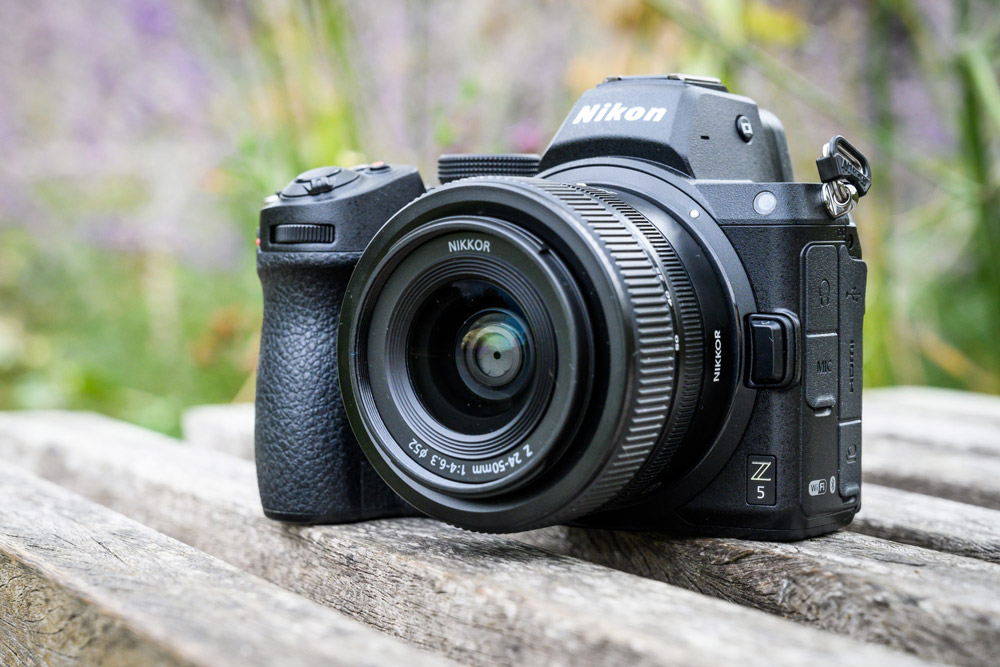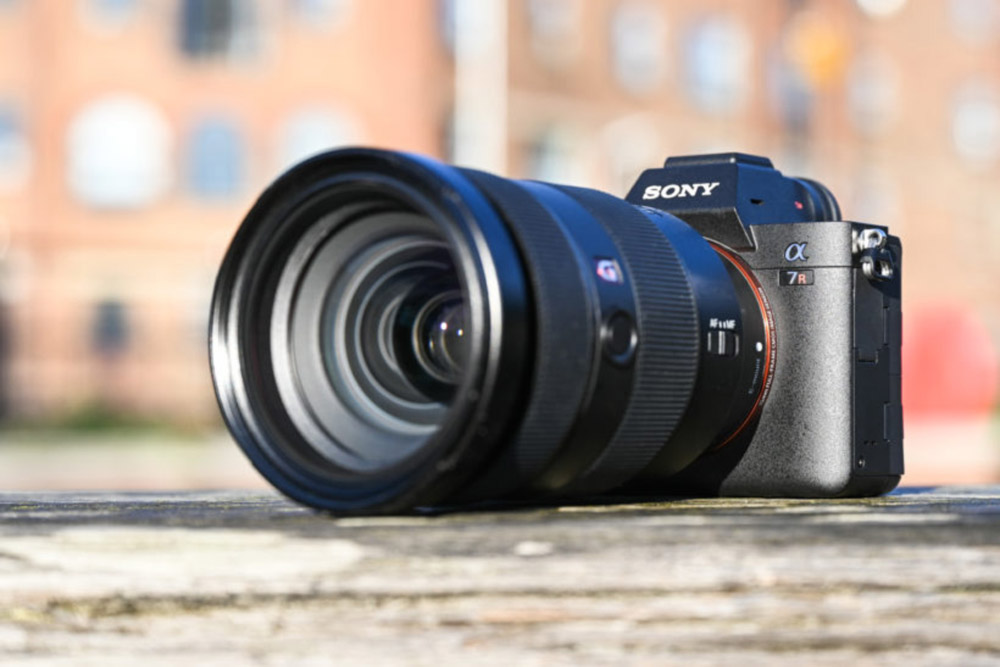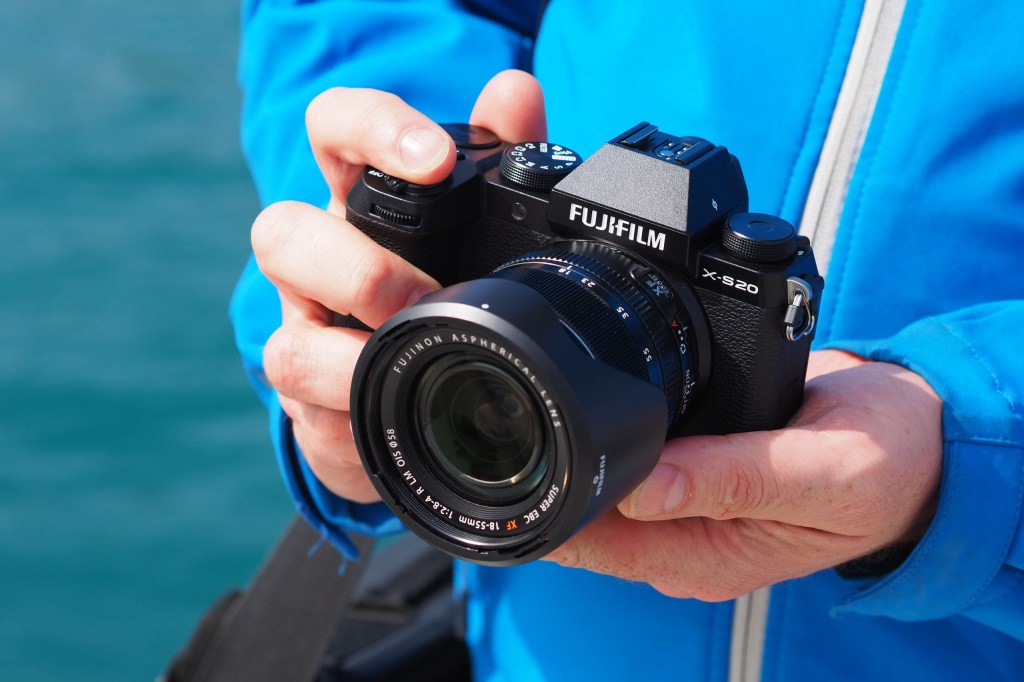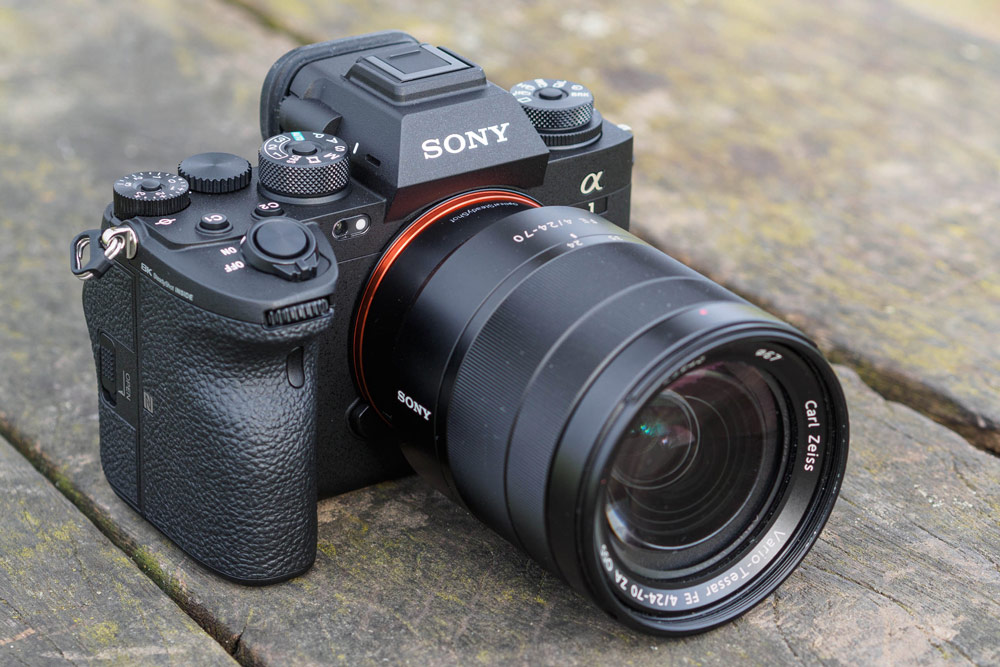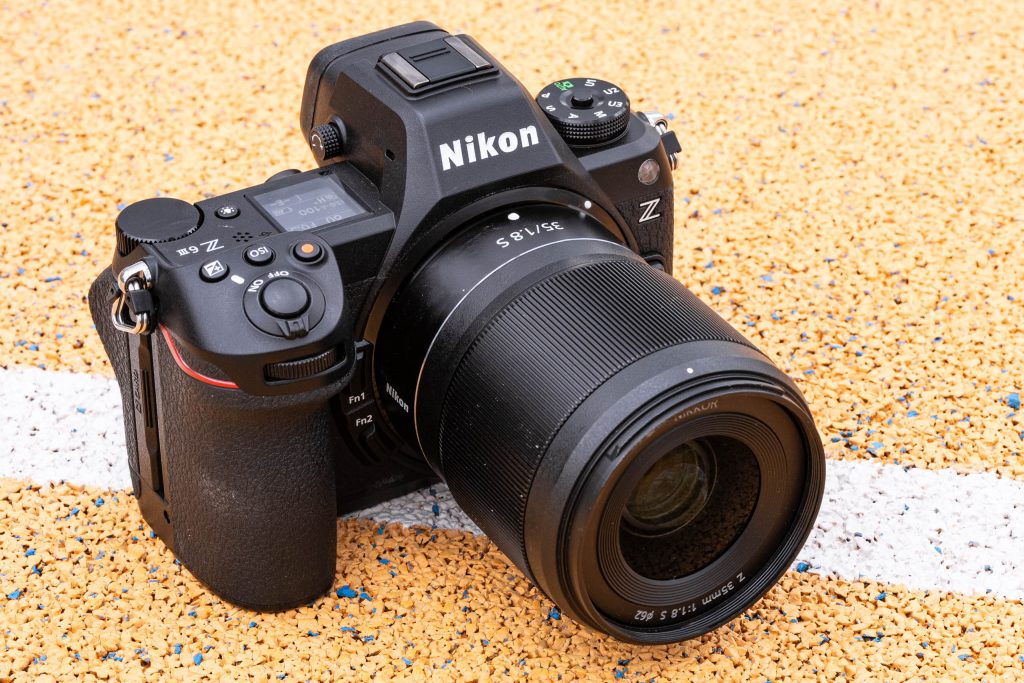Welcome to our complete guide to the best camera for wedding photography. It may be one of the most stressful and demanding genres of photography, but learning how to do wedding photography can be enjoyable and rewarding, both personally and financially. You need self-confidence to be a wedding photographer, as well as people skills, discretion, and considerable technical know-how. In addition to our recommendations for wedding cameras, our guide to the best cameras for photography across all genres covers portraits and action, both of which are essential to the wedding photographer. You’re then ready to add the right kit.
Experts on the AP review team also work as wedding photographers, so the cameras in this guide come personally recommended by professionals in the business. Every product on this list has been thoroughly tested and reviewed by our team, and we’ll never recommend a camera that we don’t believe is worth its asking price.
We’ve included some top-flight professional cameras, but also some mid-range and budget options for those who don’t have four-figure budgets. So, regardless of your level, there should be a camera here for you.
Best cameras for wedding photography: the quick list
Looking for the best deal on cameras for wedding photography? You’ll find some of the best camera deals, as our ‘Buy now’ buttons are set to automatically take you to the best prices from trusted retailers. You’ll also find a list of other retailers below each camera, so you can find the right deal for you.
- Best DSLR camera for weddings: Nikon D850 – Buy now
- Best camera for professional wedding photographers: Canon EOS R5 – Buy now
- Best budget camera for weddings: Nikon Z5 – Buy now
- Best compact camera system: OM System OM-1 Mark II – Buy now
- Best APS-C Mirrorless: Fujifilm X-H2S – Buy now
- Best high-resolution camera for weddings: Sony Alpha A7R IV / A7R IVA – Buy now
- Best budget DSLR for wedding photography: Canon EOS 90D – Buy now
- Best budget APS-C mirrorless camera for weddings: Fujifilm X-S20 – Buy now
- Best hybrid for video, action and more: Sony Alpha A1 – Buy now
- Best all-round camera for wedding photography: Nikon Z6 III – Buy now
Why you can trust Amateur Photographer
We spend many hours testing every product we recommend, in detail, in a variety of situations and shooting scenarios, and only use experts for our reviews, so you can be sure that you’re getting the best products. Find out more about our expert writers.
How to choose a camera for wedding photography
There are several considerations to choosing a camera for wedding photography. These include: camera type, sensor type and size, low-light capabilities, burst mode feature, video quality, and also overall build considering weight and weather protection.
We’ve gone into these in a little more detail below…

Camera type – mirrorless or DSLR?
To photograph weddings you’ll need a camera with an interchangeable lens system. On the market at the moment your main options to choose between are mirrorless or DSLR systems. Medium format is another type of camera; however these are very expensive and tend to produce very large image files.
Image sensor size is a serious matter for contemplation – a very large image sensor can be a disadvantage for a wedding because you’ll be snap-happy so as not to miss a shot, and it costs money to store images. The other side of the coin is that a higher-resolution image sensor means bigger final prints for your clients. You’ll have to weigh up your needs here.
The main advantages of choosing a mirrorless system over a DSLR are their weight and size. Mirrorless tend to be much lighter and more compact, plus you also have the option to shoot silently on the mirrorless models (some DSLRs do in Live View Mode), which in the middle of a quiet wedding ceremony will help you blend seamlessly into the background.
It’s also finally worth noting the difference in battery life. DSLRs use much less power than mirrorless, so an additional battery grip could be worth the investment (or several spare batteries) if you choose a mirrorless.
You can read our full guide to DSLR vs mirrorless cameras to dive deeper into this topic.
Full frame vs APS-C
The next aspect you’ll want to consider is the type of image sensor you want for your camera. The options are APS-C or Full Frame. There are distinct advantages to a Full Frame sensor; for one, they produce a shallower depth of field compared with APS-C at the same aperture setting, for those dreamy bokeh wedding images. The other advantage to shooting with a Full Frame sensor is that they tend to perform better in lowlight due to having larger photosites than APS-C. This enables them to capture proportionally more light with less noise. That’s not to say APS-C cameras are undesirable to the wedding photographer as many models can be lighter, and cheaper, which for many will be a draw.
See our guide to APS-C vs full-frame for a more detailed rundown.
Low light capabilities
To shoot a wedding you need to know your camera can perform well in low light. During the ceremony, and into the evening when light fades, external lighting will often not be viable, and you’ll need to rely on those higher ISO settings to get you through. Cameras are performing better and better in this regard. Look for what ISO range your camera comes with, so you know how far you can push it.
Another feature that most modern mirrorless cameras support these days is IBIS – in-body image stabilisation. Again, for any wedding photographer, this is going to appeal in those low-light situations, so look out for this.

Burst mode shooting
At a wedding, there is always action to be captured. Whether this is the bride throwing the bouquet, the first dance, or the cutting and eating of the cake! For this reason, checking what burst mode feature your camera is capable of shooting at is a must. Preferably around 7fps or faster is desirable but not essential if you are a good photographer!
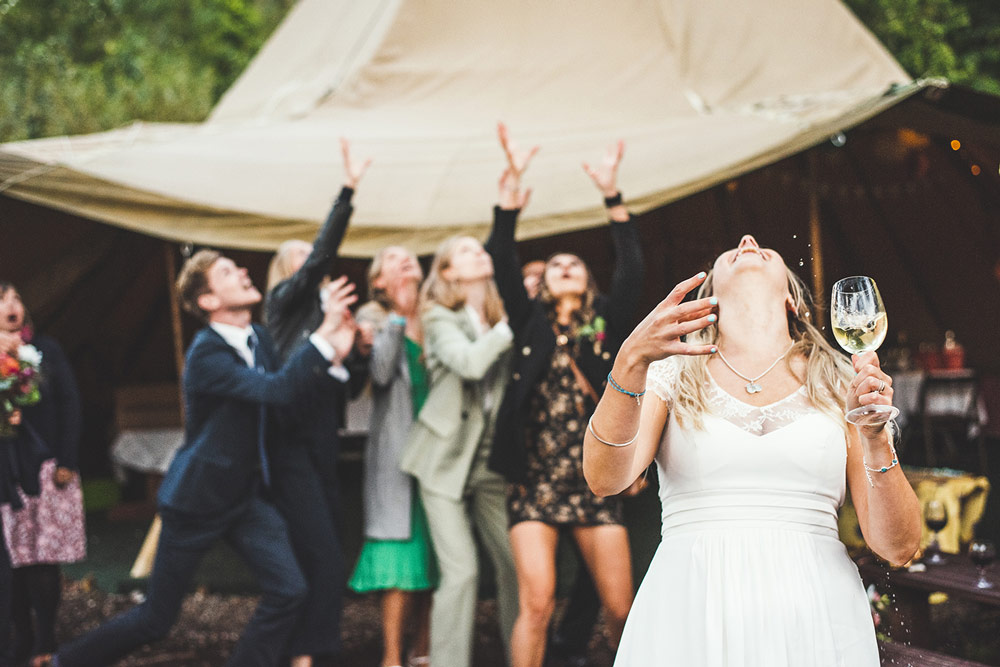
Video?
You may have no interest in video, but given that all modern cameras offer it, you would do well to at least be aware of the video capabilities of your camera. Being able to add a little video into your offering for a client can be a nice way to make yourself stand out from the crowd and given that many cameras offer seamless switching between photo and video modes, it can be quite simple to achieve. However, make sure you know how to edit video, as this can be quite time-consuming.
Have a look at our guide to video editing!
Weight
When shooting a wedding, you are going to be using your camera for a long time. You’re going to have it around your neck all day, and have to keep hands on it to make sure you’re always ready to get the shot. With that in mind, it pays to check the physical weight of a camera before hitting the “buy” button. It’s paramount to make sure you get something you’ll be able to carry for long periods without issue. Getting the right camera bag can go a long way to helping you stay comfortable all day.
Build quality and weather sealing
Finally, take into account the camera’s build and weatherproof features. Shooting a wedding is a physical and potentially hazardous undertaking. You have to work quickly and run around to get into position, making the chances of an occasional knock of your kit more likely. A sturdy body build will give you better peace of mind when out in the field. Also, as the weather is never guaranteed, you’ll be grateful if your camera comes with a weather-sealed body so it can handle unpredictable conditions.
Now you know what to look for, here in no particular order are our top 10 recommendations for the best cameras for wedding photography…
Best DSLR camera for weddings
Nikon D850
At a glance:
- 45.7-megapixel full-frame BSI sensor
- ISO 64 to 25600 (extended ISO 32 -102,400)
- Weight approx. 1005g with battery and card
- 7fps (9fps with EN-EL18b battery and MB-D18 battery pack)
- 4K UHD Video
- $2,397 / £1,699 body only
Although mirrorless has made a massive impact on the camera market, there is still plenty of space for DSLRs, and the Nikon D850 is one we’ll happily put to the top of the pile for the best camera for wedding photography. This mighty DSLR performs superbly not only in low light but also is quick to focus and includes silent shooting in Live View mode when you need the shutter to be quiet. The 45.7 megapixel sensor does not disappoint and produces exceptionally fine detail.
In our review of the Nikon D850, we found the camera to be one of the most comfortable DSLRs out there and ideal for any photographer using it for a sustained period. This makes it the ideal choice for any wedding photographer. Now retailing at $2,397 / £1,699 (down from its launch price of £3,499), you get plenty of camera for your money.
Ideal for: DSLR shooters wanting high-resolution
Best camera for professional wedding photographers
Canon EOS R5
At a glance:
- 45-million-pixel Dual Pixel CMOS AF sensor
- Up to 8-stop Image Stabilizer (when used with compatible lenses)
- ISO 100-51,200 (expandable to ISO 50-102,400)
- 8K/30P, 4K/120p, Full HD 60p video
- Twin card slot (CF express and SD)
- Weight approx. 650g (738g with card and battery)
- $2,399 / £2,454 body only
When Canon launched the full-frame mirrorless Canon EOS R5 back in 2020, it was one of the most highly anticipated cameras of all time, and it did not disappoint. The specs of this camera are more than enough to entice any wedding photographer, from its 8K video feature, 8-stop Image Stabilization feature, 5,940 selectable autofocus positions, to its impressive ISO range.
You’ll also be pleased to hear we found the 45MP image sensor to produce outstanding results. In our review of the Canon EOS R5, we found detail recovered in the raw files, especially at high ISO settings, to be astonishing, making this camera ideal for the wedding genre. We also can’t go on without mentioning its burst mode feature! When firing at 20fps in full resolution (up to 180 raw images), you’re really not going to miss a thing.
At $2,399 / £2,454, this camera is one of the more expensive on our list. Think of it as a worthy and reliable investment that will deliver outstanding results if you can stretch to its price. Those who can should look through the RF-mount lenses.
Ideal for: Professionals with a big budget
Best budget wedding camera
Nikon Z5
At a glance:
- 24.3MP full-frame CMOS sensor
- ISO100 to 51200
- 5-axis in-body image stabilisation
- 0.5in, 3,680k-dot OLED EVF
- 4.5fps burst shooting
- Dual SD card slots
- Weight approx. 675g with battery and card
- $1,397 / £1,149 body only
The Nikon Z5 is a fantastic camera filled with many features that would appeal to any wedding photographer. It’s a great choice for those looking for the best camera for wedding photography with a full-frame sensor, particularly if you’re on a budget. The Nikon Z5 is aimed at those who are just breaking into the professional market or for enthusiasts. However, don’t be put off by this if you are an established pro, as this camera has plenty to offer.
In our review of the Nikon Z5 we found it to have excellent build quality for a camera of this price and its double memory card slots is also a big bonus. The full frame 24.3MP sensor produces excellent results, however some may feel limited with the maximum 6016 x 4016 pixels (20”x13”) image output. But at around $1,400 / £1,200 you can’t have everything. We should probably also mention the 4.5fps is a little slow for today’s standard and a 1.7x crop is applied when shooting 4K video. If you can overlook these aspects then you have yourself a winner!
Ideal for: beginners and those on a tight budget looking for full-frame
Best compact camera system for weddings
OM System OM-1 Mark II
At a glance:
- 20MP Four Thirds Stacked BSI Live MOS sensor
- 50fps with C-AF, 120fps fixed AF with extended buffer
- ISO80-102,400 (same)
- 1,053-point AI detect Quad Pixel AF improved, plus added human detection
- 5.76m-dot electronic viewfinder, 0.83x magnification
- 1.6m-dot 3inch vari-angle touchscreen
- 5-axis in-body stabilisation (8.5EV with Sync IS)
- $2,100 / £2,149 body only
The new OM System OM-1 Mark II is the latest flagship camera from OM System, and updates the original OM-1. With high-speed continuous shooting, a weather-sealed camera body and new computational features, it could be the most advanced, best Olympus camera ever.
Advantageous to wedding photographers is its continuous shooting ability; the buffer is now double the size, allowing for up to 213 raw shots at 120fps; and up to 256 raw shots when shooting at 50fps with continuous AF. The AF system has also been improved with better tracking as well as better AF during video. Especially pertinent for wedding scenarios is the excellent subject detection auto-focus, which increase the reliability with which great shots are captured.
With the same sensor and processing as the original OM-1, the camera produces the same high image quality; extremely pleasing colours, great levels of detail, and very good dynamic range. With this come other benefits of a smaller sensor: camera size, speed, and price. It’s easy to use too (once used to the menus!), which further enhance its fitness for this genre.
Ideal for: anybody from beginner to professional with $2,100 / £2,150 to spend.
Read our Olympus OM System OM-1 Mark II review
Best APS-C Mirrorless for weddings
Fujifilm X-H2S
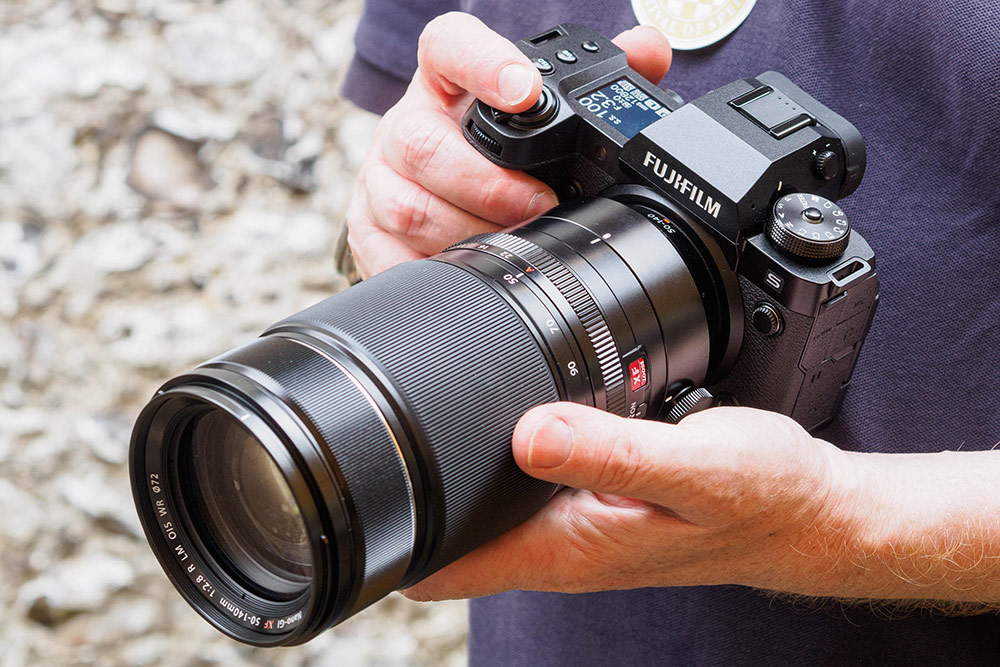
At a glance:
- 26.2MP APS-C stacked BSI CMOS sensor
- ISO 160-12800 (ISO 80-51200 extended)
- 40fps continuous shooting (electronic shutter)
- 5-axis in-body image stabilisation
- 3in, 1.62m-dot vari-angle touchscreen
- Weight approx. 660g with battery and card
- $2,499 / £1,769 body only
With the Fujifilm X-H2S, Fujifilm proved that there is a space for APS-C in the professional realm – and created probably the best Fujifilm camera for wedding photography in the process. Capable of burst-shooting at up to 40fps, and equipped with AI-based subject recognition autofocus, the X-H2S is a camera designed to make sure you never miss the moment.
While it’s heavy compared to the rest of the Fuji stable, the X-H2S is lighter than most of the bigger full-frame systems we’ve listed here, meaning it’s a good choice if you don’t fancy spending the entire wedding day extremely weighed down. It pairs well with Fujifilm’s excellent telephoto lenses like the XF 100-400mm. As we said in our full review of the camera, the X-H2S is one of the most capable APS-C camera ever made. Of course at $2,499 / £2,499, it’s also among the most expensive.
If the X-H2S is too expensive, consider an earlier Fujifilm model like the X-T4. While it doesn’t have the stacked sensor design that allows the X-H2S to achieve such dizzying speeds, the X-T4 is still a highly capable camera.
Ideal for: pros conscious of size and weight
Read our Fujifilm X-H2S review
Best high-resolution camera for weddings
Sony Alpha A7R IV / A7R IVA
At a glance:
- 61MP full-frame CMOS sensor
- ISO 100-32,000 (expandable to ISO 50-102,400)
- 10fps continuous shooting
- 5-axis in-body stabilisation
- 5.76-million-dot EVF
- 4K/30fps video
- Weight approx. 665g
- $3,198 / £3,095 body only
If having a high-resolution full frame image sensor is at the top of your priority list then the Sony A7R IV should be on your radar. Its 61MP sensor gives 9504 x 6336-pixel images, which equates to a 31.6 × 21.1inch print at a 300ppi output resolution – that’s massive!
Back in 2019, we gave the Sony A7R IV a whopping 5 out of 5 stars in our review and for good reason. We found it exceeded expectations when it came to image quality and was jam packed full of features.
Compared with other Sony predecessors, this camera comes with a bigger grip and a sturdier, redesigned memory card door, which is a bonus. For those interested in video, the touch tracking AF during video will also appeal. This enables users to simply tap where they want the frame to be sharp as the video feature is rolling.
This camera will not disappoint, although at $3,200 / £3,000 does not come cheap. If large images (and the associated large files sizes, and storage requirements) are likely to be an issue for your computer, then you may want to consider something with a lower-resolution sensor.
Also, bear in mind that the Sony A7R IV was recently re-released, at the same price, as the A7R IVA. It’s essentially the same camera, just with a higher-resolution screen and a faster USB connection.
Ideal for: those wanting to print large images, or crop into images
Read our Sony Alpha A7R IV review
<strong>Best budget DSLR for wedding photography</strong>
Canon EOS 90D
At a glance:
- 32.5-million-pixel APS-C CMOS sensor
- ISO 100-25,600 (expandable to ISO 51,200)
- 10fps continuous shooting
- Dual Pixel CMOS AF with Eye Detection AF
- Microphone and headphone input
- 1300-shot battery life
- Weight approx. 701g (including battery and memory card)
- $999 / around £869 used body only
As stated before, DSLRs are not obsolete yet, and if you prefer the old-school way a DSLR handles, then the Canon EOS 90D is well worth considering, particularly if you’re on a budget. Thanks to the Canon EF-mount, there are a range of budget lenses available, and this makes it one of the best budget options when looking for the best camera for wedding photography.
This camera comes with a 32.5MP APS-C sensor that produces excellent results, plus the 10fps burst mode is going to be appealing for any wedding photographer. In our review of the Canon EOS 90D we found it to be a versatile and reliable DSLR, capable of producing excellent images in a multitude of different shooting situations. The 1300 shot battery life will also be appealing when shooting a wedding.
The Canon EOS 90D is by no means perfect and unfortunately only comes with a single memory card slot. At $1,000 / £1,000 (body only) we aren’t going to get everything! If dual memory card slots are important to you and you want to stick with a Canon DSLR, check out the Canon EOS 7D Mark II instead.
Using the Canon EF mount, there are a wide range of EF-Mount lenses to choose from, so there should be something to suit every budget!
Ideal for: old school DSLR shooters on a tight budget
<strong>Best budget camera for wedding photography</strong>
Fujifilm X-S20
- 26.1MP sensor
- 30 fps shooting
- 6.2K 30p video
- 1.84m-dot vari-angle touch-screen
- AI-based autofocus
- 491g with battery and memory card
- $1,299 / £1,029 body only
The Fujifilm X-S20 is an even better fit than its predecessor, the X-S10 and is well worth consideration.
The same 26.1MP backside-illuminated (BSI) X-Trans CMOS 4 sensor as the popular Fujifilm X-T4, is paired with the X-Processor 5 for improved power efficiency and all-round performance improvement. The upshot is enhanced image quality and reduced noise at high ISO settings. Significantly, it also enables the AI-based subject detection AF system.
A real boon over its predecessor is the improved battery life: up to 750 shots (normal), 800 shots (economy mode).
Have a look at the best X-Mount lenses to see what your total cost is likely to be.
Ideal for: fashion conscious shooters
Read our Fujifilm X-S20 review
Best hybrid for video, action and more
Sony Alpha A1
At a glance:
- 50.1 megapixel Exmor RS image sensor
- 30fps continuous shooting
- 8K video
- ISO 100 – 32000 (extendable 50 – 102400)
- 759 point full-area phase detection AF
- Image Sensor-Shift mechanism with 5-axis compensation
- Weight Approx. 737 g with battery and memory card
- $5,498 / £4,499 body only
Yes, it costs a lot of money but with a 30fps shooting burst mode feature, 50.1MP image sensor and 9.44m-dot electronic viewfinder (EVF), the Sony A1 had to make it onto our list! In our review of the Sony A1 we stated “that the Alpha 1 can shoot at 50MP and 30fps while adjusting focus and exposure between frames is unprecedented”, and we stand by this. Oh, and it records 8K video, too!
The Sony A1 also performs incredibly well in low-light and can stretch all the way to ISO 32,000 on standard settings, or up to ISO 102,400 if needed. In our thorough testing images only started to degrade more significantly at ISO 12,800, but even at ISO 25,600 images still could be useful with some editing and tweaking.
Like the Sony A7R IV listed above, some may feel the image sensor resolution is a little high and be worried about storage space which is understandable when shooting a wedding. However the Sony A1 is a magnificent camera and one that will deal with whatever scenarios are thrown at it, making it worth the money if you can afford it.
Ideal for: action, video and whatever else you can throw at it
<strong>Best all-round camera for wedding photography</strong>
Nikon Z6 lll
At a glance
- $2,497 / £1,999 body only
- $3,097 / £3,049 with 24-70mm f/4 lens
- 24.5 MP partially-stacked full-frame CMOS sensor
- ISO 100-64,000 (standard)
- Up to 20fps shooting
- 6K 60fps raw video recording
- 8-stop in-body stabilisation
- 5.76m-dot electronic viewfinder
- 3.2in, 2.1m-dot fully articulated screen
And last but no means least, the Nikon Z6 III makes our top ten. The very recent successor to the Z6 II, oft overlooked overlooked by the cheaper full frame Z5 or the higher spec Nikon Z7 II. Yet this is a great all round camera and one any wedding photographer would enjoy shooting with.
The Nikon Z6III is a 24MP full-frame mirrorless camera designed for serious enthusiast and semi-professional photographers. It uses a brand-new ‘partially stacked’ sensor, which provides rapid readout speeds that support excellent autofocus and fast shooting.
As with its predecessor, we have a 24.5MP sensor in a very similar, if cosmetically refreshed, body design. But in fact, the Z6 III comes with exciting new sensor technology, a sensational viewfinder, and almost the same autofocus system as the Z8 and Z9, thanks to its Expeed 7 processor. These are big plusses for any wedding photographer.
Nikon has also significantly improved the Z6III’s autofocus capability, not only compared to its predecessor, but also the Zf. Its subject recognition system recognises people, animals, vehicles, and planes, with the ability to select automatically between different types. Eye-detection and tracking is also onboard.
Autofocus is specified to work in staggeringly low light of -10EV, while for the first time in the Z6 line, you also get Nikon’s 3D-tracking technology for shooting moving subjects.
Ideal for: best all rounder
More wedding tips, tricks and guides: 10 shots you must get at a wedding, plus check out our Complete Guide to Wedding Photography.
Have a look at our latest buying guides, and reviews for more options.
How we test cameras
We test cameras by taking photographs and video in a wide range of real-world situations. We evaluate their control layouts, handling, and the usability of their viewfinders and screens. We assess their autofocus across a range of different subjects and shooting scenarios and test a camera’s continuous shooting capacity.
We also examine the effectiveness of image stabilisation systems. Last but not least, we critically evaluate the image quality in both JPEG and raw, including resolution, high-ISO noise, and dynamic range. For our final conclusion and score, we take all these factors into account, along with portability and lens systems. You’ll find the full breakdown of how each camera has performed in our full reviews





